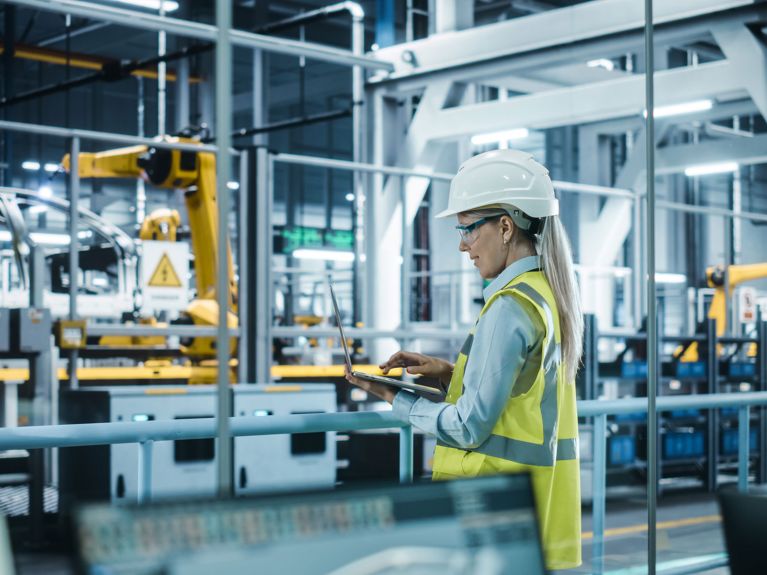How companies use artificial intelligence
The Fraunhofer Society conducts applied research into the use of AI with the aim of helping the economy.

What can artificial intelligence do better than humans? “The human brain is extremely good at pattern recognition,” says Professor Thomas Rauschenbach, Director of the Applied Systems Technology branch of the Fraunhofer Institute of Optronics, System Technologies and Image Exploitation. “It can tell the difference between a cup of coffee and a glass of water without much effort. But it’s much more difficult to recognise patterns in so-called mass data, also known as ‘big data’. This is where artificial intelligence is superior to humans.” The Fraunhofer Society is looking into how this could benefit industry. With its approximately 30,000 employees, it is not only a major player in Germany but the leading organisation for applied research worldwide.
Here you can find out about three AI projects which the Fraunhofer Society is pursuing for industry:
REMORA – the prerequisite and basis for the use of AI
There are many obstacles to the use of artificial intelligence in companies, such as systems of different ages and machines made by different manufacturers. These often “speak” multiple different languages and store data in different formats and databases. The REMORA project (Multi-Stage Automated Continuous Delivery for AI-based Software & Services Development in Industry 4.0) is designed to be an open and technology-neutral framework to enable all systems in a company to communicate with each other, thereby enabling the overarching use of AI.

Condition monitoring and predictive maintenance – keeping machines running
Condition monitoring draws on the slightest changes in the data series of measured values – for example the sound of a machine – to detect incipient problems in production systems during operation, such as wear and tear or malfunction. It then categorises these and triggers reactions. Predictive maintenance involves predicting faults and wear in individual machines or entire plants based on the analysis of data series. This enables precise planning of service and maintenance, allowing downtime to be minimised and accelerating the troubleshooting and repair process.
“Explainable AI” (XAI) – how AI arrives at its results
Does AI in industry have disadvantages, too? Thomas Rauschenbach has this to say: “A big challenge in using some deep learning methods is that we’re not always able to understand the results of the AI.” In the case of statistical evaluations, it is possible to account for the results conclusively, but the situation is different with more complex and self-learning algorithms. “With AI processes, there is much that resembles a black box. If the result doesn’t fit, it’s hard to understand why,” says Rauschenbach. So “Explainable AI” (XAI) is an important topic of research at the Fraunhofer Society. The aim is to show in a transparent and comprehensible way how AI arrives at its results.
You would like to receive regular information about Germany? Subscribe here:


